Latviešu strēlnieki Pirmajā pasaules karā I WW1
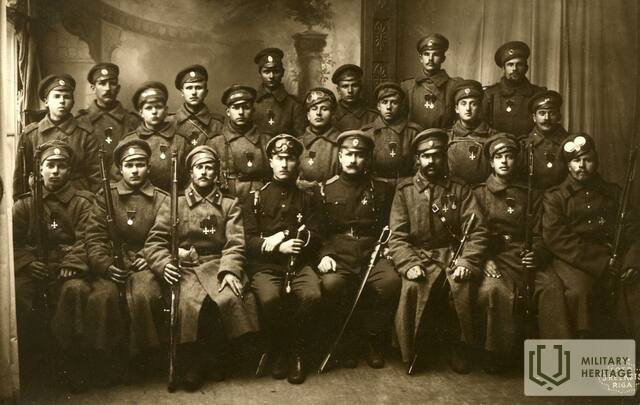
1. pasaules karš bija Eiropas vēstures pavērsiena punkts, un tāds tas bija arī Latvijas vēsturē. Jau 1915. gadā karš plosījās visā Eiropā, un tā gada vasarā aizsākās arī stāsts par varonīgajiem latviešu strēlniekiem. Tūkstošiem brīvprātīgo Latvijā iesaistījās armijā un dibināja savas nacionālās vienības. Brīvprātīgi stāties pretī ienaidniekam plecu pie pleca ar saviem tautiešiem vēlējās tūkstošiem vīru.
1915. gada pavasarī Vācijas karaspēks iebruka Latvijas teritorijā, un pēc gandrīz pusgadu ilgušas karadarbības rudenī fronte nostabilizējās, pāršķeļot Latviju divās daļās. Par frontes līniju un simbolisko robežu kļuva likteņupe Daugava, kuras krastos daudziem palika dzimtās mājas un tuvinieki. Varonīgie latviešu strēlnieku priekšteči bija divi Daugavgrīvas cietokšņa apvienotie zemessargu darba bataljoni, kuri aizvadīja smagas kaujas pret iebrūkošajiem vāciešiem.
Līdz 1915. gada pavasarim Krievijas militārās iestādes bija saņēmušas vairākus ierosinājumus dibināt latviešu nacionālās militārās vienības. Tomēr tie visi bija noraidīti. Pēc sekmīgajām Daugavgrīvas cietokšņa zemessargu bataljonu cīņām pie Jelgavas 1915. gada maija sākumā doma par latviešu militāro formējumu nepieciešamību parādījās no jauna. Par to iestājās viens no tā laika ievērojamākajiem latviešu politiķiem – Krievijas Valsts Domes deputāts Jānis Goldmanis. Lai pārrunātu šo ideju un tās īstenošanas iespējas, viņš 1915.gada 1.jūnijā aicināja uz slepenu sanāksmi ievērojamus latviešu inteliģences, militāro un saimniecisko aprindu pārstāvjus.
Krievijas armijas katastrofālais stāvoklis 1915. gada vasarā bija viens no būtiskākajiem faktoriem labvēlīga lēmuma saņemšanai formēt latviešu vienības, solot latvisku komandas valodu, latviskus uzrakstus uz kaujas karogiem un sevišķas krūšu nozīmes. Saglabājās cerības arī uz politiskām reformām pēc kara beigām – plašākas pašvaldības ieviešana Latvijā, administratīvā reforma un kultūras autonomija.
1915. gada 10.augustā laikrakstā „Dzimtenes Vēstnesis” tiek publicēts rakstnieku Ata Ķeniņa un Kārļa Skalbes sacerētais un Krievijas Valsts Domes deputātu Jāņa Goldmaņa un Jāņa Zālīša parakstītais uzsaukums „Pulcējaties zem latviešu karogiem”, kas aicināja brīvprātīgos vecumā no 17 līdz 35 gadiem pieteikties latviešu bataljonos un aizstāvēt savu dzimto zemi pret vācu iebrucējiem.
Pirmajās dienās ieradās tik daudz vīru, ka organizācijas komitejas strādāja pat naktīs. Brīvprātīgo vidū bija daudz jaunekļu, kuri nebija pieredzējuši nedz karu, nedz dienestu, taču viņu degsme aizrāva līdzi arī vecākus vīrus, kuri zināja kurp dodas. Pavisam pieteicās ap 8000 brīvprātīgo, un visā 1. pasaules kara gaitā latviešu strēlnieku bataljonos bija līdz pat 25000 vīru. Līdz 1916.gadam latviešu strēlnieki apvienojās Daugavgrīvas bataljonā, Rīgas, Kurzemes, Vidzemes, Zemgales, Tukuma, Bauskas, Valmieras un Rezerves bataljonos, kurus vēlākos kara gados pārdēvēja par pulkiem.
Latviešu strēlnieku bataljoni pirmajās cīņās devās 1915. gada oktobrī, lai apturētu vācu uzbrukumu pie Rīgas. 1916. gada vasarā un rudenī strēlnieki cīnījās Nāves salā, 1917. gada janvārī Tīreļpurvā pie Ložmetējkalna notika Jelgavas operācija jeb Ziemassvētku kaujas, kur strēlnieki zaudēja trešo daļu savu biedru, 1917. gada rudenī viņi turējās pret vācu pārspēku kaujās pie Mazās Juglas.
Pēc Pirmā pasaules kara beigām daļa latviešu strēlnieku palika Krievijā un karoja Pilsoņu karā dažādās frontes pusēs, daļa piedalījās Brīvības cīņās Latvijā. 1920. gadā, iestājoties miera laikam, Latvijā atgriezās liela daļa bijušo strēlnieku, kuri pēdējos piecus gadus bija pavadījuši karojot.
No aptuveni 3000 latviešu strēlniekiem, kuri krita līdz 1917.gadam, 870 ir apglabāti Rīgas Brāļu kapos. Pārējos dažādu iemeslu dēļ nebija iespējams nogādāt līdz Rīgai, tādēļ latviešu karavīru apbedījumi atrodami Slokā, Ķemeros, Tīnūžos, Ķekavā un citur.
Līdzās 1. pasaules kara notikumiem Latvijā patiesībā norisinājās vēl kāda cīņa – cīņa par latviešu pašapziņu un tolaik arī no strēlnieku cīņas gara dzima cerība par savas valsts izveidi.
Papildus izziņas avoti
1. Dokumentālā filma "Zem latviešu karogiem. Varoņu dzimšana", 2015. Pieejams: https://www.youtube.com/watch?v=GmZV74r6EbI [skatīts: 04.05.2021.].
2. Dvēseļu putenis. Digitālais muzejs. Pieejams: https://www.dveseluputenis.lv/lv/laika-skala/notikums/67/latviesu-inteligence-nolemj-dibinat-strelnieku-vienibas/ [skatīts: 05.05.2021.].
3. Zariņš K. “Pirmais pasaules karš Latvijā un latviešu strēlnieku cīņas”, 2015. Pieejams: https://www.sargs.lv/lv/pirmais-pasaules-kars/2015-07-15/pirmais-pasaules-kars-latvija-un-latviesu-strelnieku-cinas [skatīts: 05.05.2021.].
Jūsu komentāri
Saistītās laikalīnijas
Saistītie objekti
Ziemassvētku kauju muzejs un brīvdabas ekspozīcija
Atrodas Jelgavas novadā, Valgundes pagastā, “Mangaļu” mājās.
Ziemassvētku kauju muzejs ir Latvijas Kara muzeja filiāle. Atklāts 2005. gadā un atrodas vietā, kur apkārtnē norisinājās Ziemassvētku kaujas. Cīņu vietās joprojām ir saglabājušies unikāli 1. pasaules kara nocietinājumi.
Ziemassvētku kaujas, iespējams, ir zināmākais un dramatiskākais 1. pasaules kara notikums Latvijas vēsturē. Tas ieņem īpašu vietu latviešu militārajā un kultūras vēsturē. Cīņas galvenokārt asociējas ar latviešu strēlnieku uzbrukumu Vācijas armijas vienībām, kas notika īpaši skarbos un nelabvēlīgos apstākļos. Nebijis gadījums, kad vērienīga kaujas operācija bija sākusies bez artilērijas atbalsta.
Mūsdienās var aplūkot izstādi, kur redzami kauju vietās atrasti priekšmeti. Muzeja iekštelpu ekspozīcijai ir noteikts darba laiks, savukārt brīvdabas 1.pasaules kara fortifikāciju ekspozīcija un izstādes apskatei pieejamas apmeklētājiem katru dienu. Muzeja apkārtnē ir izveidoti tūrisma maršruti un izziņas takas.
Upeslejas ierakumi
Maršruta sākumposms atrodas Upesleju centrā pie autobusa pieturas.
1917. gada 1. septembra rītā pēc trīs stundu ilgas artilērijas apšaudes vācieši uzsāka trīs koka pontonu tiltu būvi pāri Daugavai pie Ikšķiles. Tika izšauti apmēram 560 000 šāviņi no 1159 lielgabaliem un mīnmetējiem, kas pilnīgi nomāca 66 krievu lielgabalus un piespieda atkāpties Daugavas labā krastā novietoto 186. divīziju. Krievijas 12. armijas komandieris ģenerālis Parskis lika 43. korpusam veikt pretuzbrukumu pārrāvuma vietā un nodeva korpusa komandiera rīcībā 33., 136., 138. divīzijas, 116. divīzijas vienu brigādi un 2. latviešu strēlnieku brigādi.
1. septembra pēcpusdienā latviešu strēlnieki saņēma pavēli izvirzīties cīņai pret Daugavu šķērsojošajiem vāciešiem. 2. latviešu strēlnieku brigāde no Ropažiem devās pretī uzbrūkošajām vācu vienībām un 5. Zemgales latviešu strēlnieku pulka karavīri ap pulksten četriem pēcpusdienā sasniedza nocietinātās pozīcijas gar Mazās Juglas upes labo krastu. Pēc artilērijas apšaudes 2. septembra dienas vidū sākās uzbrukums latviešu strēlnieku pozīcijām. Aizsardzības cīņas izvērtās 14 km garā frontē gar Mazās Juglas labo krastu. 2. latviešu strēlnieku brigādes karavīri ar dažiem lielgabaliem stājās pretim skaitliski un tehniski stiprākam vācu karaspēka grupējumam, kas uzbrukumā izmantoja arī aviāciju, ugunsmetējus un ar indi pildītas lielgabalu granātas. Strēlniekiem izdevās 26 stundas varonīgi noturēt fronti līdz 3. septembrim. Izpildījuši savu uzdevumu, dzīvi palikušie latviešu karavīri pēc 12. armijas vadības pavēles atkāpās līdz Siguldas un Cēsu pozīcijām. Zaudējumi bija ļoti smagi – 5. Zemgales un 6. Tukuma latviešu strēlnieku pulkā no ierindas izsita vairāk nekā pusi cīnītāju, 7. Bauskas un 8. Valmieras latviešu strēlnieku pulks cieta mazāk.
Kultūras mantojuma centrs "Tīnūžu muiža"
Atrodas Ogres novada Tīnūžu ciemā, 7 kilometru attālumā no Ogres un Ikšķiles pilsētas.
Pirmās rakstītās ziņas par muižu ir no 16.gs. Līdz 18.gs. vidum tā tika uzskatīta par saimniecisku ražotni ar necilām ēkām. Laika gaitā muiža attīstījās par lielu saimniecību.
1. pasaules kara laikā apkārtnē norisinājās kaujas starp Krievijas un Vācijas armijām, kurās cīņas aizvadīja arī latviešu strēlnieki. Neatkarības kara laikā Tīnūžu muižā atradās Latvijas armijas 1. Valmieras kājnieku pulka štābs un bruņu auto novietne. 1932. gadā muiža tika nodota Latvijas Kara invalīdu savienībai, kas nodrošināja dzīves vietu un aprūpi kara veterāniem.
2. pasaules kara laikā, 1943. gadā no Igaunijas uz Tīnūžu muižu tika pārcelta Vācijas armijas vienība “FAT 212”. Tā bija frontes diversantu grupa, kas sagatavoja karavīrus cīņai pret Sarkano armiju. Izlūkošanā, partizānu kara taktikā un sabotāžā tika apmācīti arī latviešu karavīri. Tīnūžu muižas kungu ēka tika iznīcināta, Sarkanajai armijai virzoties uz Rīgu.
Mūsdienās redzama izteiksmīga ainava ar vēsturisko apbūvi Mazās Juglas upes krastos. Kultūras mantojuma centrā “Tīnūžu muiža” apskatāmas ekspozīcijas, tostarp par latviešu strēlniekiem.
Piemineklis “Varoņu altāris” Tīnūžos
Atrodas Ikšķiles novadā Tīnūžu ciemā, šosejas malā pie Tīnūžu pamatskolas.
Piemiņas zīme latviešu strēlniekiem, kuri 1. pasaules kara laikā cīnījās pret Vācijas armiju. Kaujas pie Mazās Juglas upes 1917. gada 1.- 2. septembrī bija Rīgas operācijas kulminācijas brīdis. Vācijas armija sāka uzbrukumu iepretim Ikšķilei ar mērķi ieņemt Rīgu un sagūstīt Krievijas 12. armiju. Vācijas armijas vienības, šķērsojot Daugavu pa pontonu tiltiem, sasniedza Mazās Juglas upes apkārtni, kur tām ceļu aizšķērsoja latviešu strēlnieki. Viņiem tika pavēlēts aizkavēt pretinieku, līdz visa Krievijas 12. armija izies no aplenkuma, nenokļūstot Vācijas armijas gūstā. Cīņas notiek ar lieliem zaudējumiem abām karojošām pusēm.
Mūsdienās var apskatīt 2005. gadā atklāto tēlnieka Jāņa Karlova pieminekli “Varoņu altāris”, kas veltīs latviešu cīnītājiem. 300 metru attālumā atrodas Tīnūžu muiža, kur izvietota ekspozīcija.
Ložmetējkalns Tīreļpurvā
Atrodas Jelgavas novadā, netālu no autoceļa A9.
Ložmetējkalns ir 1. pasaules kara cīņu vieta, kas Latvijā ir vienīgais valsts nozīmes kultūrvēsturiskais liegums. Tas atrodas uz Garās kāpas, kas ir daļa no Nordeķu – Kalnciema kāpu grēdas. Ložmetējkalna nosaukums radies laikā, kad tur atradās grūti ieņemami Vācijas armijas nocietinājumi, kas tika aizstāvēti ar spēcīgu ložmetēju uguni.
Ziemassvētku kaujas, iespējams, ir zināmākais un dramatiskākais 1. pasaules kara notikums Latvijas vēsturē. Tas ieņem īpašu vietu latviešu militārajā un kultūras vēsturē. 1917. gadā Ložmetējkalnam uzbruka Krievijas armijas latviešu strēlnieku un sibīriešu vienības un to ieņēma. Gūstā tika saņemti vismaz 600 pretinieki, kā arī iegūtas vērtīgas trofejas, piemēram, 19 ložmetēji. Tas bija nozīmīgākais Ziemassvētku kauju panākums un lielākais ieguvums, kuru Rīgas frontē Krievijas karaspēks bija sasniedzis. Latviešu strēlnieki uzskatīja, ka tieši viņiem pienākas augstienes iekarotāju gods.
Mūsdienās ir pieejams skatu tornis, no kura redzamas agrāko kauju vietas. Apkārtnē aplūkojamas piemiņas zīmes un kara laika liecības. Netālu atrodas Silenieku Brāļu kapi.
Ziemassvētku kauju piemiņas vieta pie Antiņu brāļu kapiem
Atrodas Babītes novadā, ceļa malā pie bijušajām Antiņu mājām un vecās medikamentu noliktavas.
Antiņu jeb Tīreļu karavīru kapsēta izveidota 1. pasaules kara laikā. Apkārtnē atradās Krievijas impērijas armijas aizsardzības pozīcijas. 1917. gadā, Ziemassvētku kauju laikā, tuvumā tika izvietots 5. Zemgales latviešu strēlnieku pulka štābs, lazarete ar medikamentu noliktavu.
1917. gadā naktī no 5.uz 6. janvāri, astoņu milzīgu ugunskuru apgaismojumā, ar militāru godu tika apglabāti 105 5. Zemgales latviešu strēlnieku pulka cīnītāji. Viņi krita kaujās pret Vācijas armiju vai mira no ievainojumiem. Apbedīšanas ceremoniju vadīja pulka komandieris Jukums Vācietis. Vēlākos gados kapsētā apglabāti arī karavīri no citām Krievijas armijas vienībām. 1925. gadā kapsētā tika atklāts arhitekta Eižena Laubes piemineklis, un labiekārtota teritorija. Daudzviet sastopama informācija par kapsētā apglabātiem 3800 karavīriem, taču tā jāvērtē kā maz ticama un nepārbaudīta.
Otrais piemineklis pirmās neatkarīgās Latvijas karavīriem Mārupē
atrodas Mārupes novadā, pirms golfa kluba “Viesturi” ēkas meža ceļā, pretim norādei uz golfa mācību laukumu.
Projekta idejas autori – Mārupes novada gids Miķelis Jakunovs un zemes gabala “Dumpmaļi” īpašnieks Visvaldis Dumpis.
2014.gada novembrī Latvijas patriotu nedēļā, godinot Latvijas karavīrus, mežā pie Dzilnupītes, uz Mārupes un Babītes novadu robežas, vēl vienā no Pirmā pasaules kara kauju vietām tika atklāts otrais piemineklis latviešu karavīriem. Pieminekļu idejiskais autors un finansētājs ir Visvaldis Dumpis, to veidojis tēlnieks Ivars Feldbergs. Piemiņas vietas saimnieks Visvaldis Dumpis vēlētos, lai šeit ne tikai 14. jūnijā un 25. martā, bet arī 10. jūlijā, valsts aizsardzības spēku dibināšanas gadskārtā un citos latviešiem svarīgos vēstures notikumos pulcējas cilvēki.
2018.gada 09.novembrī, pie pieminekļa atklāts informatīvs stendi par vietas vēsturi un apskates objektiem. Tas veltīts vietas vēsturei, stāstot par šeit reiz bijušajām mājām "Adieņi" un tajā dzīvojošo Ķurbju dzimtu, Pirmā Pasaules kara notikumiem apkārtnē, kā arī vēsturiskajiem objektiem, kuri dabā vairs nav skatāmi – Dūču tiltu, Dzirnavu dīķi un dzirnavām, Medību pirti.
Latviešu strēlnieku lazaretes medikamentu noliktava
Atrodas Babītes novadā, Antiņu karavīru kapsētas un atjaunoto ierakumu tuvumā.
1.pasaules kara laikā no 1915. gada šajā apkārtnē atradās Krievijas impērijas armijas aizsardzības pozīcijas. 1917. gadā, Ziemassvētku kauju laikā, pie Antiņu mājām atradās 5. Zemgales latviešu strēlnieku pulka štābs un lazarete ar medikamentu noliktavu, kuru vadīja ievērojamais latviešu kara ārsts Pēteris Snīķeris.
Ziemassvētku kaujās latviešu strēlnieku uzbrukumi Vācijas armijas vienībām notika īpaši skarbos un nelabvēlīgos apstākļos. Kaujās gūtie ievainojumi bija visdažādākie - šaujamieroču radītas brūces, kontūzijas un traumas, kā arī apsaldējumi. Savlaicīgu medicīnisko palīdzību vajadzēja nodrošināt tūkstošiem latviešu karavīru. Tā tika organizēta, lai ievainotie pēc iespējas ātrāk saņemtu aprūpi. Kaujas laukā darbojās neapbruņoti sanitāri, kuri sniedza pirmo palīdzību un iznesa ievainotos no bīstamām vietām. Kaujas vietu tuvumā bija izveidoti pārsienamie punkti, kuros turpināja aprūpi un veica šķirošanu. Smagāk ievainotos karavīrus ar pajūgiem un automašīnām evakuēja uz lazaretēm vai hospitāļiem. Lazarešu tuvumā ierīkoja kapsētas, kur apglabāja no ievainojumiem mirušos.
Mūsdienās var aplūkot veco medikamentu noliktavu. Tuvumā atrodas Antiņu karavīru kapsēta, kā arī rekonstruēti 1. pasaules kara ierakumi un zemnīcas. Vide piemērota pastaigām mežā, atklājot spilgtas militārā mantojuma liecības.
Pirmā pasaules kara izziņas maršruts un zemnīca Olainē
Atrodas Olainē, netālu no Olaines Vēstures un mākslas muzeja.
Vēstures izziņas maršruts izveidots 2018. gadā vietā, kur 1. pasaules kara laikā atradās Krievijas armijas nocietinājumi, kas bija daļa no apkārtnes aizsardzības sistēmas. Vācijas un Krievijas armiju cīņas Olaines apkārtnē piesaista uzmanību vairāku iemeslu dēļ. Purvainais apvidus karojošajām pusēm neļāva gūt ātrus panākumus un prasīja no karavīriem daudzveidīgas iemaņas, darbojoties nelabvēlīgos apstākļos. Precīzai apvidus analīzei, izlūkošanai un fortifikācijas jeb inženiertehniskajām būvēm bija liela nozīme karadarbībā.
Mūsdienās izziņas maršruts ir brīvi pieejams un sniedz aptuvenu priekšstatu par karavīru dzīves apstākļiem. Atjaunotās būves ir slēgtas, taču aplūkojamas, iepriekš sazinoties ar Olaines Vēstures un mākslas muzeja speciālistiem.
Nāves sala
Salu grupa atrodas Daugavas kreisajā piekrastē Rīgas HES ūdenskrātuvē.
Viena no baisākajām un leģendārākajām 1. pasaules kara kauju vietām ir “Nāves sala” vai Ikšķiles priekštilta nocietinājumi. 1915. gadā, Krievijas armijai atkāpjoties no Kurzemes un Zemgales, dažas vienības bija palikušas Daugavas kreisajā krastā, kur izveidoja pozīcijas cīņai pret Vācijas armiju. Upes krastus savienoja tilts. Šajā vietā norisinājās viens no lielākajiem ķīmisko ieroču lietošanas gadījumiem Latvijas teritorijā.
Latviešu karavīri vietu sauca par “Nāves salu”, bet citu tautību karavīri par “Elli”. Nāves salas pozīcijām bija stratēģiska un simboliska nozīme. Latviešu karavīriem tā bija daļa no Vācijas okupētās Kurzemes. Cīņas notika Daugavas krastos pie Ikšķiles, un apziņā tās asociējās ar senču cīņām Krusta karu laikā.
Mūsdienās vieta pieejama, izmantojot laivu transportu. Apskatāma Rīgas HES ūdenskrātuves neappludinātā teritorija. Saglabājies E. Laubes projektētais piemineklis. Vietām ir rekonstruēti aizsardzības pozīciju elementi. Daugavas krastā pie Ikšķiles Kābeļu kalna atrodas informatīvais stends un skatu vieta, kur visērtāk aplūkot Nāves salu no attāluma.
Pieejamas ekskursijas: "Jenču laivas", info@jenculaivas.lv, +37120607509
Ogres Vēstures un mākslas muzejs
Atrodas Ogres centrā pie monumentālā Latvijas valsts karoga.
Ogres Vēstures un mākslas muzejs dibināts 1981. gadā. Muzeja krājumu veido vairāk nekā 40 tūkstoši dažādu priekšmetu, kas iegūti Ogres pilsētas un bijušā rajona teritorijā, un daudzpusīgi atspoguļo Ogres novada kultūrvēsturisko mantojumu. Pirmā pasaules kara laikā Ogre no 1915. gada līdz 1917. gadam atradās tiešā frontes tuvumā, 1915. gadā krievu karaspēkam atkāpjoties Rīgas virzienā. Ogres salā bija ierakumi, artilērijas šāviņi gandrīz pilnīgi iznīcināja Ogres apbūvi. Pilsētas pastāvīgie iedzīvotāji bija aizklīduši bēgļu gaitās. Muzeja ēkā savulaik atradusies PSRS Valsts bankas nodaļa. Pilsēta bija viena no vecākajām kūrortpilsētām ar bagātu kultūras vēsturi. Dabas vērtību ieskauta, tā bija populāra vieta atpūtai. Padomju okupācijas laikā pilsēta piedzīvoja vērienīgas pārmaiņas, kas izdzēsa daļu no vēsturiskās apbūves un gadsimtiem veidotas ainavas. Laika gaitā Ogre mainījusies, un tapuši daudzveidīgi apskates objekti.
Mūsdienās muzejā var aplūkot plašas ekspozīcijas. Tas atrodas Brīvības ielā, kas paredzēta gājējiem, un ir vienīgā iela ar gandrīz pilnībā saglabātu seno apbūvi. Tā kļuvusi par vienu no Ogres simboliem. Pilsēta līdzīgi kā senāk top par populāru atpūtas vietu.
Militāro divriteņu kolekcija Saulkrastu Velosipēdu muzejā
Atrodas Saulkrastos netālu no Baltās kāpas, A1 šosejas un dzelzceļa stacijas “Pabaži” tuvumā.
20.gs. sākumā divriteņu pieejamību un priekšrocības sāka plaši izmantot armijās. Tika veidotas īpašas riteņbraucēju vienības, kurām piemita ļoti liels kustīgums. Riteņbraucēji vieglāk veica izlūkošanu, negaidītu uzbrukumu pretiniekam un veiklāk nekā kājnieki darboties plašā teritorijā. Pēc 1. pasaules kara arī Latvijas armijā bija riteņbraucēju vienības, kuru rīcībā bija Latvijā ražoti armijas divriteņi. Karavīram, kurš ietilpa riteņbraucēju vienībās, bija jāatbilst stingrām prasībām. Viņam bija jābūt izturīgam, ar labu redzi, dzirdi, veselu sirdi un plaušām. Svars nedrīkstēja būt mazāks nekā 80 kg, augums no 165-180 cm.
Latvijas armijā bija noteikts, ka labi sagatavots riteņbraucējam, dienas laikā jānobrauc 80-100 km, bet forsēti - līdz 150 km. Ziemas laikā, kad divriteņus nebija iespējams izmantot, lietoja slēpes. Slēpošana bija ziemas sezonas apmācības būtiska sastāvdaļa. Riteņbraucējam dienā bija jāspēj noslēpot 50-60 km attālums. Viņam bija jābūt izturīgam, daudzpusīgi apmācītam cīnītājam, pārvietojoties plašā teritorijā. Latvijas valsts veicināja karavīru gribu nodarboties ar sportu. Daudzi armijas riteņbraucēji kļuva par profesionāliem sportistiem.
Muzejā var aplūkot lielāko velosipēdu kolekciju Baltijā. Kopumā muzejā atrodas aptuveni 60 Latvijā izgatavoti un lietoti velosipēdi, tostarp, armijas parauga divriteņi.
Ekskursijas pieejamas gida pavadībā (latviešu, angļu, krievu valodā). Kontakti: +371 28883160, +371 29276832.
Ierakumi Saulkrastos
Atrodas Saulkrastos, piekrastes kāpās pie restorāna „Lagoon”.
Krievijas armijas nocietinājumi būvēti 1. pasaules kara laikā, lai nodrošinātu piekrastes aizsardzību pret Vācijas armijas desanta operācijām. Tā ir daļa no aizsardzības rajona nocietinājumu sistēmas, kas atradās stratēģiski svarīgu objektu tuvumā.
1. pasaule kara laikā Latvijas teritorijā Krievijas armija bija izveidojusi vairākas aizsardzības sistēmu līnijas. Gadījumos, ja tiktu pārrauta kāda no līnijām, tad jaunas pozīcijas un tur esošie papildspēki nepieļautu Vācijas armijas tālāku virzību. Viena no līnijām atradās joslā, kas sākās Saulkrastos, turpinājās Līgatnē, Nītaurē un noslēdzās Koknesē, piekļaujoties pirmajai aizsardzības līnijai, kas stiepās gar Daugavas krastu. Mērķis bija nocietināt apvidu ap Saulkrastiem, jo tur atradās daudzi nozīmīgi objekti. Vairākas pārejas pār upēm, sazarots ceļu tīkls, kas veda Vidzemes vidienē, kā arī aizsardzības pozīcijas, kas piekļāvās jūras krastam.
Mūsdienās šajā vietā redzami ierakumi skaistā piejūras mežā ar skatu uz jūru. Tas ir viens no apskates objektiem plašajā Saulkrastu tūrisma piedāvājumā.
Brīvības piemineklis
Atrodas Rīgas centrā, Brīvības laukumā.
Brīvības piemineklis ir viens no izcilākajiem Latvijas vēstures, arhitektūras un mākslas pieminekļiem. Celts pēc Kārļa Zāles projekta par tautas ziedojumiem. Atklāts 1935. gadā kā latviešu tautas brīvības un tēvzemes mīlestības simbols. Kopā ar Rīgas Brāļu kapu ansambli tas pieder pie vērtīgākajiem monumentālās arhitektūras un tēlniecības paraugiem.
Brīvības piemineklis izsaka latviešu kultūras ētiskās un estētiskās vērtības. Simboli atspoguļo brīvības filozofisko būtību un latviešu nācijas vēsturiskos priekšstatus par neatkarības izcīņas posmiem. Norāda uz fiziskā un garīgā spēka iemiesojumu. Heroiskā valoda stāsta par latviešu tautu kā pašpaļāvīgu, aktīvu vēstures veidotāju un sava likteņa noteicēju.
Tā vietā sākotnēji atradās Krievijas cara Pētera I piemineklis. 1. pasaules karā to demontēja, lai ar kuģi nogādātu Petrogradā. Vācijas armijas zemūdene kuģi torpedēja, un tas nogrima pie Igaunijas teritorijas Vormsi salas. Brīvības pieminekli Padomju okupācijas režīms vairākkārt plānoja nojaukt, bet tas nerealizējās.
Mūsdienās var aplūkot vienu no Latvijas simboliem un vērot armijas godasardzes tradīcijas.
Ģenerāļa Kārļa Goppera piemiņas istaba dzimtajās mājās "Maskati"
Atrodas Plāņu pagastā uz Vijas upes krasta.
Apskatāma ģenerāļa Kārļa Goppera piemiņas istaba dzimtajās mājās "Maskati".
“Maskatu” saimniecību vadīja ģenerāļa brālis Augusts Goppers, jo talantīgais kara vadonis bija aizņemts lielajos notikumos un pasaules karos. 1920. gadā ģenerālis atgriezās Latvijā, savās dzimtajās mājās. Bet daudzi atbildīgie pienākumi viņu saistīja ar Rīgu. “Maskatos” turpināja saimniekot Augusts. 1940. gadā ģenerāli Gopperu arestēja un 1941. gada 25. martā nošāva čekas pagrabos. 1944. gadā Gopperu dzimta ar trijiem zirgu pajūgiem devās bēgļu gaitās uz Kurzemi. Karš dzimtu sadalīja, Latvijā palika Aleksandra Goppera meitas – Biruta, Elza un Anna. “Maskatos” atgriezties viņas vairs nedrīkstēja. Mājas bija lielas un rūpīgi koptas. Tur pa atsevišķām istabām tika izmitinātas trīs četras ienācēju ģimenes. Lielajā kūtī iekārtoja zirgu fermu. Savstarpēju kašķu dēļ 1980. gadā izcēlās ugunsgrēks. Nodega kūts un lielais šķūnis. Laimīgā kārtā uguns nepārsviedās uz dzīvojamo māju, liesmas atvairīja senču stādītie lielie koki.
1991. gadā pēc brīnumainās Atmodas otrreiz atdzima Latvijas valsts. 1992. gadā ģenerāļa Goppera brāļa Augusta dzimta atguva “Maskatus” kā senču svētumu. Desmit gadus visi sūri, grūti strādāja, lai glābtu mājas no bojāejas, lai atjaunotu un uzceltu nopostītās ēkas, lai darītu skaistu visu “Maskatu” sētu. Mājas ir atjaunotas senajā izskatā, ir iekārtota arī ģenerāļa Kārļa Goppera piemiņas istaba.Piemiņas istabu iespējams apmeklēt iepriekš zvanot un piesakot apmeklējumu +371 29396870, +371 29254285.
Ekskursija uz Pirmā pasaules karā kritušo karavīru pieminekli Spāres muižas parkā
Atrodas Spāres muižas kompleksa teritorijā.
Pirmā pasaules kara laikā Spāres muižā atradās Krievijas armijas lauka lazarete. Tajā mirušie 24 karavīri, tostarp arī latviešu strēlnieki, apglabāti netālu iekārtotajos brāļu kapos. Pieminekli atklāts 1935. gada 6. oktobrī.
Ierīkojot piemiņas vietu (sākot no ceļa) abās ceļa pusēs tika iestādītas liepu rindas. 1935. gadā visus apkārtnes labiekārtošanas darbus veica Spāres skolnieki skolas pārvaldnieka Kārļa un Alvīnes Skalbergu vadībā.
Arī šobrīd piemiņas vietas sakopšanā tiek iesaistīti Amatas novada Spāres pamatskolas izglītojamie. Lielu atbalstu šajos darbos sniedz Cēsu 27. KB zemessargi.
Par tradīciju ir kļuvis lāpu gājiens uz Pirmā pasaules karā kritušo piemiņas vietu, kas tiek organizēts 11. novembrī. Šo pasākumu allaž kuplina Cēsu 27. KB zemessargi, kopā ar viņiem vienmēr ir kapelāns. Kā neiztrūkstoša pasākuma sastāvdaļa ir svētku zalves.
Spāres muižas kompleksa teritorijā tiek piedāvāta ekskursija uz Pirmā pasaules karā kritušo karavīru pieminekli (45 min.) iepriekš piesakot apmeklējumu zvanot +371 26558464.
Piemiņas akmens latviešu strēlniekiem Plakanciemā
Plakanciemā latviešu strēlnieki izcīnīja savu pirmo uzvaru vēsturiskajā 1915. gada 29. oktobra nakts kaujā – tikai nedēļu pēc tam, kad 1. Daugavgrīvas latviešu strēlnieku bataljons bija izgājis no Rīgas un uzsācis frontes darbību. Ar sekmīgo Plakanciema kauju sākās mūsu strēlnieku varonīgais cīņu ceļš. Nakts uzbrukumam pie Misas upes bija arī nenovērtējama morāla nozīme – latviešu strēlnieku cīņas spējas neviens neapšaubīja, viņi ātri kļuva populāri un uz mūsu nacionālajām vienībām pārnāca daudzi latvieši no krievu pulkiem.
Piemiņas akmeni veidoja pēc Ķekavas novada pašvaldības pasūtījuma Ķekavas novada akmens apstrādes un restaurācijas uzņēmums "Akmens apstrādes centrs "AKM"" - akmens amata meistari Guntis Pandars un Pēteris Zvaunis.
Panākumu Plakanciema kaujā nodrošināja rūpīga nepārtraukta četru dienu ilga izlūkošana, 1. rotas komandiera Fridriha Brieža sastādītais pēkšņā uzbrukuma plāns un mūsu karavīru varonība.
Frontē tobrīd situācija bija ļoti saspringta, jo vācu karavīri vairākās vietās lēnām turpināja tuvoties Rīgai. Pie Plakanciema nesen viņi pārnāca pāri Misas upei un sāka ierīkot priekštilta pozīciju, izvietojot vācu 376. kājnieku pulka 2. bataljonu un 4 ložmetējus.
Latviešu strēlnieku uzbrukums tika balstīts uz pārsteigumu, ātru rīcību un dažādu darbību koordināciju. Katram 1. rotas strēlniekam tika izsniegtas četras rokas granātas, 60 karavīri uzvilka baltos apmetņus, jo tikko bija uzsnidzis plāns sniegs. Kad uzbrucēji pielīda pietiekoši tuvu vācu pozīcijām, pulksten 22.00 tika dots signāls un sākās trieciens. Abi mūsu ložmetēji apšaudīja pretinieka abus flangus, lai vācieši nevarētu piesaistīt rezerves. Metot rokas granātas, latviešu strēlnieki strauji iebruka vācu ierakumos, krievu artilēristi apšaudīja Misas upes laipas un pretinieka galveno aizsardzības līniju. Ienaidnieka karavīri apjuka - ciešot smagus zaudējumus, viņi atkāpās pāri upei un atstāja placdarmu uzbrucēju rokās. Viena mūsu rota bija sakāvusi četras reizes lielāku pretinieka vienību!
Latviešu strēlnieki zaudēja sešus kritušos – Juri Butenieku, Frici Ērmani, Rūdolfu Hofmani, Kristapu Krūmiņu, Jāni Nauri un Kirijanu Šnurovu. Viņi visi apbedīti Rīgas Brāļu kapos. No astoņiem ievainotajiem divi vēlāk nomira – Jāzeps Brūveris (apbedīts Pleskodāles kapos ) un Jānis Skuja (apbedīts Rīgas Brāļu kapos ). Vācu zaudējumi – 31 karavīrs kritis, 34 saņemti gūstā un 45 ievainoti. Trofejās uzbrucēji ieguva ložmetēju un 35 šautenes.
Piemineklis Pirmajā pasaules karā un Latvijas Neatkarības karā kritušo karavīru piemiņai
Atrodas Baznīcas ielā pretī Svētās Annas baznīcai.
Apskatāms piemineklis Pirmajā pasaules karā un Latvijas Neatkarības karā kritušo karavīru piemiņai.
1923. gada 1. maijā iepretī Mazsalacas luterāņu baznīcai tika stādīta “Varoņu birzs”, kurā katram kritušajam tika veltīts pa ozolam. Saskaņā ar Likertu kopumā tika iestādīti 97 ozoli – 23 veltīt Neatkarības karā kritušajiem un 74 – Pirmajā pasaules karā kritušajiem. Taču tā laika presē minēts, ka stādīti 106 ozoli.
1927. gada 21. augustā “Varoņu birzī” tika atklāts pēc arhitekta Paula Kundziņa meta celts betona piemineklis, kura būvniecībā piedalījies arī tēlnieks Vilhelms Treijs.
Piemineklis atrodas līdzās Mazsalacas Svētās Annas baznīcai, kura celta īpaši izraudzītā vietā, lai tās slaido (58,6 m), skaisto torni varētu redzēt jau no tālienes. Baznīca ir labi saglabājusies, jo padomju laikos nav tikusi nedz izpostīta, nedz piemērota kādām citām vajadzībām.
Latviešu strēlnieku Brāļu kapi
Atrodas pie Nītaures pareizticīgo baznīcas līdzās II. pasaules kara padomju armijas karavīru piemiņas ansamblim.
1934.gada 2.septembrī tika iesvētīti to strēlnieku un nezināmo karavīru Brāļu kapi, kuri krita sadursmē ar vāciešiem pie Nītaures 1917.gada septembrī.
Hronoloģiskā secība kapu veidošanā:
1917.gada septembrī frontes līnija bija nostiprinājusies posmā Saulkrasti-Līgatne-Nītaure-Lobes ezers (pie Krapes)-Koknese. Ceļā Mālpils-Peļņi-Nītaure 6.Tukuma un 5.Zemgales pulkiem norisinājās pēdējā sadursme ar pretinieku – vācu karaspēku. Pulkvedis Jukums Vācietis par to sacīja:
“Pēc šīs kaujas frontē iestājās klusums.”
Kritušie tika apglabāti pie pareizticīgo baznīcas Nītaurē un dažādās sadursmju vietās posmā Mālpils-Peļņi-Nītaure.
1922.gada laikraksta “Latvijas Kareivis” Nr. 113.21.05 rakstā “Vēsturiskās cīņu piemiņas vietas” minēts, ka, “Latvijas strēlnieku Brāļu kapi vēl atrodas Nītaurē, kur arī notika sadursmes ar vāciem”.
1929.gada 17.jūlijā uz Nītauri apskatīt apbedījumus izbrauca komisija, kas konstatēja, ka Nītaurē pie pareizticīgo baznīcas apglabāti aptuveni 100 krievu karaspēka daļu karavīru (der zināt, latviešu strēlnieku pulki tika dibināti Krievijas armijas ietvaros), bet pie luterāņu kapa kambara 6 latviešu strēlnieki: Otto Bērziņš (5.Zemgales pulks), Kārkliņš (6.Tukuma strēlnieku pulks), Alfrēds Bedrītis (kritis pie Cēsīm Atbrīvošanas cīņās 1919.gadā), Sviļums (strēlnieks), Žanis Krūtainis (5.Zemgales pulks) un kāds nezināms latviešu karavīrs.
1933.gadā pie Peļņu mājām apglabātos strēlniekus pārapbedīja Mālpils kapos, bet atsevišķās vietās Mores pagastā kritušos karavīru mirstīgās atliekas pārveda uz Nītaures Brāļu kapiem pie Nītaures pareizticīgo baznīcas. Šeit pārapglabāja arī 6 kritušos karavīrus, kas bija guldīti luterāņa kapos.
Cēsu muzeja fondos glabājas nezināma autora fotogrāfija, kurā redzami Brāļu kapi Nītaurē pirms II. pasaules kara.
Pēc II. pasaules kara šajos kapos tika apglabāti pie Nītaures un Mores kaujās kritušie padomju karavīri un likvidētas visas liecības par to, ka šeit atradušies latviešu strēlnieku Brāļu kapi. 1984.gadā tika izveidots pašreiz redzamais padomju karavīru jeb sarkanarmiešu piemiņas ansamblis.
Tādējādi latviešu cīnītāju piemiņas vieta tika noslaucīta no zemes.
2017.gadā, pateicoties Nītaures novadpētniecības entuziastes un vides gides Daces Eipures iniciatīvai un darbam, tika izveidota jauna piemiņas vieta veco Brāļu kapu teritorijā.
Ar piemiņas vietas un I.pasaules kara vēsturi Nītaurē var iepazīties vides gides Daces Eipures programmā "Latvijas vēstures piedzīvojumi Nītaurē", iepriekš zvanot un piesakot apmeklējumu +371 29156765!
Cēsu Brāļu kapi
Atrodas Cēsu Lejas kapsētā, Lenču iela 15, Cēsis.
Viena no nozīmīgākajām Pirmā pasaules kara un Neatkarības kara piemiņas vietām Cēsīs ir Brāļu kapi Lejas kapos.
Kapos atrodas 1927.gadā atklātais Cēsu mākslinieka un domnieka Augusta Jullas (1872-1958) veidotais Brāļu kapu pieminekli, kas veltīts no 1915.gada līdz 1920.gadam Brāļu kapos apbedītajiem karavīriem.
Cēsu Lejas kapsētas Brāļu kapos apbedīti ap 200 karavīru. To vidū nezināms skaits Pirmajā pasaules karā kritušo latviešu strēlnieku un krievu karavīri, kā arī vācu (10), poļu u.c. tautību karavīri. Šajos kapos Latvijas Atbrīvošanās cīņu laikā apglabāti 22 kritušie 5.(2.) Cēsu kājnieku pulka karavīri, kā arī 11 citās Latvijas armijas vienībās kritušie brīvības cīnītāji. Brāļu kapos atdusas arī 2 igauņi, 15 lielinieku upuri un arī latviešu sarkanie strēlnieki.
Cēsu Vēstures un mākslas muzeja ekspozīcijas Jaunajā pilī
Atrodas Cēsu pils kompleksā, Pils laukumā 9.
Cēsu Vēstures un mākslas muzejā apskatāma pastāvīgā vēstures un interjeru ekspozīcija “Cēsis – Latvijas vēstures simbols” un iespēja piedalīties spēlē izlaušanās istabā “Cēsu kauju leģendas”.
Ekspozīcijas daļā “Sarkanbaltsarkanais karogs Cēsu un Latvijas vēsturē” iespējams izsekot karoga tapšanas gaitai no 13. gadsimta Atskaņu hronikā pieminētā cēsnieku sarkanbaltsarkanā karoga prototipa līdz 20. gadsimtā apstiprinātajam valsts simbolam. Redzams kā veidojās latviešu strēlnieku bataljonu karogi un kā veidojās nacionālo krāsu lietošanas tradīcijas Latvijas Neatkarības kara laikā.
Ekspozīcijas daļā “Cēsis un Latvijas brīvības cīņas” atspoguļota gan Cēsu rotas dibināšana 1918. gada decembrī, gan igauņu un latviešu kopējās cīņas 1919. gada vasarā Cēsu kaujās, gan laiks kad Bermontiādes dienās Cēsis īsu brīdi bija Latvijas pagaidu galvaspilsēta. Ekspozīcijā parādīta arī Cēsu uzvaras pieminekļa vēsture.
Izlaušanās istabā “Cēsu kauju leģendas” spēles dalībniekiem stundas laikā jāatrod izeja. Izejas meklējumos jāizmanto atjautība, jārisina dažādas mīklas, jāievēro sakarības un jāatrod telpās paslēpti priekšmeti, kas nepieciešami, lai tiktu ārā no telpas. Ja grupai izdodas izlauzties pirms noteiktā laika beigām, ir uzvarēts. Spēlē var piedalīties 2-4 spēlētāji. Plašāka informācija par izlaušanās istabu.
1918. gada 8. decembrī Cēsu pilī nodibināta viena no pirmajām Latvijas bruņoto spēku vienībām Cēsu rota, kuras organizators bija virsleitnants Artūrs Jansons.
1933. gada 8. decembrī pie Cēsu Jaunās pils, kur tolaik atradās 8. Daugavpils kājnieku pulka štābs un garnizona virsnieku klubs, atklāja rotai veltītu piemiņas plāksni. Padomju okupācijas laikā plāksne noņemta. Bojāto plāksni ieguvis tēlnieks Kārlis Jansons un tā glabājusies viņa darbnīcā “Siļķēs” pie Cēsīm. Bojātā plāksne tagad aplūkojama Cēsu Vēstures un mākslas muzeja ekspozīcijā.
1919. gada jūnijā pēc Cēsu kaujām Jaunajā pilī izvietojās Ziemeļlatvijas civilpārvalde.
Kauču jeb Veco rakstu priede
Priede atrodas Strenču-Valkas šosejas kreisajā pusē, aptuveni kilometru aiz Strenču robežas, 140 metrus no šosejas, mežā, 400 metrus ZR no Kaučiem.
Koka raupjajai mizai izplēsts gabals un stumbrā ar nazi latviešu vecajā drukā iegrebti dziesmas vārdi, kas tagad salasāmi daļēji – ˝ …c mīļotā / …ten līdzi cīn… / … nāvīgo as… / …ņa mēs a… / …dz cietuši / … strādniek…˝ ("Nāc, mīļotā meiten, līdz cīniņā, ņem nāvīgo asmeni rociņā. Mēs daudz cietuši strādnieki.").
Pētnieki izteikuši versiju, ka šis dzejolis priedes stumbrā varētu būt iegravēts laikā no 1905. līdz 1918. gadam, kad Latvijai vēlās pāri revolūcija un Pirmais pasaules karš, zina stāstīt Latvijas valsts mežu speciālisti.
Latvijas pirmā karoga autora J. Lapiņa piemiņas vieta
Atrodas “Lejas Pintuļi”, Veselavas pagastā, Priekuļu novadā.
Redzama piemiņas vieta Latvijas pirmskaroga autoram Jānim Lapiņam.
Latviešu nacionālā karoga izveide notika Pirmā pasaules kara laikā. 1915. gadā, veidojot latviešu strēlnieku bataljonu karogus, atsevišķi mākslinieki piedāvāja karogu metiem sarkanbaltsarkanās krāsas. Pēc pedagoga un žurnālista Jāņa Lapiņa meta sarkanbaltsarkano karogu 1916. gada otrajā pusē izgatavoja viņa skolniece, Valmieras bēgļu patversmes skolotāja Marianna Straumane.
Tas ir pirmais zināmais un reāli izgatavotais latviešu nacionālais karogs, kas arī saglabājies līdz mūsu dienām.
Priekuļu novada Veselavas pagasta “Lejas Pintuļos” 2014.gadā tika atklāta piemiņas vieta pirmskaroga autoram Jānim Lapiņam.
Pirmais zināmais autentiskais latviešu nacionālais karogs, izgājis bēgļu gaitas Krievijā, padomju un vācu okupācijas laikā rūpīgi slēpts, pašreiz glabājas Cēsu vēstures un mākslas muzejā. To 1997.gadā atdāvināja abu meita Lija Poga.
Pirmā pasaules kara nocietinājumu līnija Olainē
Kaujas darbība Latvijas teritorijā sākās 1915. gada pavasarī ar Vācijas impērijas armijas iebrukumu Liepājā. Krievijas impērijas armijas vienības atkāpās caur Kurzemi Rīgas virzienā. Vasaras beigas Vācijas impērijas armijas virspavēlniecība deva pavēli ieņemt atbilstošas pozīcijas un tās nostiprināt. Atkāpjoties no Jelgavas, šajā vietā ieradās pirmās Krievijas impērijas armijas karavīru vienības. Šī bija nozīmīga vieta Rīgas aizsardzībai, jo blakus atradās Rīgas – Jelgavas šoseja, pa kuru bija iespējams pievest nepieciešamos kara materiālus. 1915. gada novembra vidū fronte nostabilizējās un abas armijas veica pozīciju izbūves darbus. Vienu kilometru uz DR no mežsarga mājām “Lapsas” atradās otrā aizsardzības līnija, kuru būvēja virs zemes, jo dēļ purvainā reljefa nebija iespējams būvēt tradicionālos zemē iedziļinātos ierakumus. Uzbēruma veida valni veidoja brustvērs, kas sastāvēja no zemes vaļņa, kas nostiprināts no abām pusēm ar neliela diametra baļķiem un metāla stieplēm. Mūsdienās var apskatīt saglabājušos aizsardzības līniju, kas saglabājusies nepilna kilometra garumā.
Latvijas Kara muzejs
Atrodas Vecrīgā netālu no Brīvības pieminekļa un izvietots senā aizsardzības būvē.
Latvijas Kara muzejs ir viens no vecākajiem Latvijas muzejiem. Tā pirmsākumi meklējami 1. pasaules kara laikā. Muzeja krājums tika veidots galvenokārt no kaujas laukā iegūtām un karavīru personīgajām lietām. Kopš 1919. gada muzeja telpas atrodas Pulvertornī. Pēc Latvijas valsts izveides par muzeja galveno mērķi kļuva ekspozīcijas izveide par Latvijas militāro vēsturi un iedzīvotāju aktīvo lomu savas zemes aizsardzībā. 1937.gadā muzejs tika paplašināts ar piebūvi. Ēka tika celta speciāli tā vajadzībām — tehniski viens no modernākajiem tā laika muzejiem Eiropā.
Pulvertornis ir viens no bijušajiem Rīgas nocietinājumu torņiem. Tas pieminēts 1330. gadā kā Smilšu tornis. 1621.gadā, kad Rīgu aplenca Zviedrijas karaspēks, torni sagrāva. 1650. gadā tika uzbūvēts jauns tornis, šaujampulvera un ieroču glabāšanai. Pēc pilsētas nocietinājumu nojaukšanas Pulvertornis ir viena no vērtīgākajām liecībām par Rīgas aizsardzības sistēmu.
Muzejā var aplūkot 11 ekspozīcijas. Izstādīti dažādi ieroči, dokumenti, formas tērpi, apbalvojumi un citi ar karu vai karavīru ikdienu saistīti priekšmeti.
Latviešu strēlnieku zemnīcas un ierakumi Tīreļos
Atrodas Mārupes novada Babītes pagastā, Antiņu Latviešu strēlnieku kapsētas un vecās medikamentu noliktavas apkaimē.
1.pasaules kara laikā šeit bija Krievijas impērijas armijas Latviešu strēlnieku aizsardzības pozīcijas. Ierakumu un virszemes zemnīcu komplekss tika veidots smilšu pakalnos.
Ierakumu, pozīciju, tranšeju karš - populārākie sinonīmi, lai raksturotu 1. pasaules karu un uzsvērtu nocietinājumu nozīmi. Tie tika veidoti, balstoties uz kara inženieru pētījumiem un piemērojoties videi un jaunu ieroču attīstībai. Karavīru ikdienas darbs bija nemitīga aizsardzības pilnveidošana. Viņi zemnīcām mēdza dot nosaukumus, kas atgādināja par dzimtajām vietām, lai domās tuvinātos mājām, aizmirstot par kara realitāti.
Ierakumu līnijas bija pretiniekam grūti ieņemamas sistēmas. Attīstoties ieročiem, to aizsardzība kļuva aizvien sarežģītāka. Zemnīcu jumti tika nostiprināti, lai tie izturētu artilērijas lādiņu triecienus. Tranšejas veidoja ar virzienu maiņām, lai sprādzieni nodarītu pēc iespējas mazākus zaudējumus. Satiksmes ejās veidoja “kabatas” - īstermiņa slēptuves artilērijas apšaudes laikā, kas aizsargāja karavīrus no šrapneļiem un šķembām.
Mūsdienās atjaunota daļa nocietinājumu, lai sniegtu priekštatu par fortifikācijas būvēm. Iespējams apskatīt 3 atjaunotas zemnīcas un 100 m garu ierakumu posmu. Pauguriem bagātais mežs piemērots pastaigām, iepazīstot dažādas militārā mantojuma liecības.
Privātkolekcija "Dzimtas klēts"
Ģimenes īpašumā atrodas privātkolekcija "Dzimtas klēts", Salas novadā (Jēkabpils rajona Sēlpils pagasts), kurš izveidots 2007.gadā. To apmeklējuši ceļotāji no daudzām valstīm un kontinetiem.
Ceļotājiem tiek stāstīts par Pirmo pasaules karu, Latvijas armijas laiku, Otro pasaules karu, Brāļu kapiem Rīgā un Ziemassvētku kaujām. 2011.gadā tiek uzsākts un turpināts iekārtot atjaunoto blindāžu, kurā iekārta ekspozīciju "Dvēseļu putenis" par Pirmo pasaules karu, par Vidzemes 4.strēlnieku pulku, Ziemassvētku kaujām. Tiek stāstīts par karavīru Robertu Socki, kurš atdus Brāļu kapos, Aleksandru Grīnu, Jāni Akurāteru, Arvīdu Žilinski, u.c. Apkārtnē ir redzamas bumbu bedres no Pirmā pasaules kara, kā arī avots, no kura tika ņemts dzeramais ūdens. Ekskursija 1,5 - 2 stundas latviešu un krievu valodā.
Piemineklis Jelgavas aizstāvjiem
Piemineklis Jelgavas aizstāvjiem atrodas pie Svētes skolas, Jelgavas novads.
1991. gadā pie Svētes skolas atklāja pieminekli Daugavgrīvas zemessargiem, kuri 1915. gada aprīļa beigās apturēja vācu armijas uzbrukumu Jelgavai. 1915.gada maija sākumā Jelgavā šim notikumam tika veltīta plaša demonstrācija. Faktu, ka latviešu zemessargiem izdevās apturēt vācu uzbrukumu, izmantoja J. Čakste un domubiedri, lai pamatotu ideju par latviešu strēlnieku vienību dibināšanu Pirmā pasaules karā. Pieminekļa tēlniece Alīna Veibaha (1923-2011).
Piemineklī iekalts teksts: “Es Jums saku sveši ļaudis – šai zemē nenāciet ;
Dzied man zelta lakstīgala zobentiņa galiņā ! ”
Nordeķu – Kalnciema kāpu grēda
Ap 30 km garā kāpu grēda, kas mūsdienās ir izsekojama dabā no Iļģuciema (ar nelieliem pārtraukumiem) līdz pat Tīreļiem, ir viens no iespaidīgākajiem Piejūras zemienes reljefa veidojumiem, kurš reti kad tiek uztverts kā vienots dabas veidojums. Kāpa ir veidojusies uz viena no pēdējiem Baltijas ledus ezera krastiem, Baltijas ledus ezera ūdeņiem atkāpjoties. Kāpu grēdu veido divas, paralēlas 50 – 100 m platas kāpu joslas. Parasti tās ir 6 – 10 m augstas, bet augstākie to punkti sasniedz 16 – 19 m virs jūras līmeņa. Kleistu, Imantas un Beberbeķu apkaimē skaistie priežu meži, kas klāj kāpas, ir populāra pastaigu, atpūtas un sportošanas, bet ziemā – distanču slēpošanas vieta. Kāpas daļa Lāčupītes apkaimē ir saistīta ar Bermontiādes notikumiem. Uz kāpas Pārdaugavā atrodas Lāčupes jeb Lācara kapi. Starp Piņķiem un Babīti kāpas saudzēšanas nolūkos ir izveidots Beberbeķu dabas parks. Nordeķu – Kalnciema kāpu grēdas rietumdaļu aptuveni 10 km garumā sauc par Garo kāpu. Pie Garās kāpas (dienvidos no Trenčiem) atrodas Antiņu brāļu kapi, Latviešu strēlnieku lazaretes medikamentu noliktava un atjaunotās latviešu strēlnieku zemnīcas. Dienvidos no Garās kāpas atrodas purvainu mežu un purvu masīvs, t.sk. Rāvājs un Maztīrelis. Iepretim Maztīrelim atrodas Ložmetējkalns ar skatu torni un atpūtas vietu un t.s. vācu valņa daļa. Vēl tālāk – rietumu virzienā pie Garās kāpas atrodas Latviešu strēlnieku brāļu kapi un Piķu brāļu kapi. Ar lielākiem, vai mazākiem pārtraukumiem, gandrīz visas Nordeķu – Kalnciema kāpu grēdas garumā ir redzami ierakumi. Garās kāpas dienvidrietumdaļā – purvainajos mežos, kas tai pieguļ no dienvidu puses, redzamas Pirmā pasaules kara laika bumbu bedres. Gar Garo kāpu visā tās garumā (dienvidos no tās) iet nelieli meža ceļi, kas piemēroti pastaigām un garākiem pārgājieniem – lieliska iespēja izzināt Pirmā pasaules kara cīņu vietas.
Krāču kalnu piemineklis
Krāču kalni ir viena no Litorīnas jūras lielākajām krasta kāpām. Tās augstākā daļa atrodas 29 m virs jūras līmeņa un 26 m virs apkārtējiem līdzenumiem. Par Litorīnas jūru dēvē Baltijas jūras priekšteci, kas pastāvēja aptuveni pirms 7000 līdz 5000 gadiem.
No Krāču kalniem uzbrukumu Ziemassvētku kaujās uzsāka 12. krievu armijas 6. sevišķā brigāde, kuras uzdevums bija pārraut vācu fronti no Lielā Tīreļa purva līdz Lielupei. Mēnesi ilgajās kaujās krievu armija ieguva 25 kvadrātkilometrus lielu platību, bet zaudējumi bija milzīgi – 45 tūkstoši kritušu, ievainotu un bez vēsts pazudušu karavīru. Latviešu strēlnieku zaudējumi bija 9 tūkstoši kritušu, ievainotu un bez vēsts pazudušu karavīru. Ziemassvētku kaujās latviešu strēlnieki ieguva milzīgu slavu kā varonīgi un izcili karavīri, par to samaksājot ļoti dārgu cenu - savas dzīvības.
Par piemiņu kaujās kritušajiem ir uzstādīts piemineklis. Ik gadu 11. novembrī Lāčplēša dienā un 18. novembrī Latvijas valsts proklamēšanas gada dienā šajā vietā tiek aizdegtas sveces kritušo varoņu piemiņai.
Aizsargājamā dabas teritorija "Krāču kalni" kā Litorīnas laika kāpu valnis
Saistītie stāsti
Bērzaines ģimnāzija - Pirmā pasaules kara lieciniece
1915.gada pavasarī un vasarā vācu karaspēks okupēja Kurzemi un Zemgali. Karojošo pušu karaspēks izvietojās Daugavas krastos. Vidzeme kļuva par piefrontes teritoriju, bet Cēsis par piefrontes pilsētu, kuras apkārtnē izvietojās cariskās Krievijas armijas Ziemeļu frontes 12. armijas štābs, kurš 1915. gada vasarā un rudenī pārcēlās uz Bērzaini pie Cēsīm (Birkenruh bei Wenden), tagadējā Cēsu Bērzaines pamatskolas ēkā un teritorijā.
Latviešu strēlnieku ikdienas rutīna Nāves salā
Atmiņās spilgti raksturota karavīru ikdienu Nāves salā.
Ieraksts dienasgrāmatā par brīdi, kad karavīri uzzina par gatavošanos Ziemassvētku kaujām.
Latviešu strēlnieki un viņu virsnieki par kaujas sākumu tika informēti pēdējā brīdī. 5. Zemgales latviešu strēlnieku pulka apakšvirsnieks Rūdolfs Ivanovs dienasgrāmatā aprakstīja pēdējo vakaru pirms kaujas sākuma. Īss, bet spilgts un autentisks teksts, kas parāda ļoti nozīmīgu brīdi karavīram – uzzina par kaujas dienu.
Atmiņas par Kara muzeja izveides sākumu
Teicējs apraksta apstākļus kādos izveidojās Kara muzejs. Pieminētas problēmas un kolekciju veidošanas darbs.
Tā radās Brāļu kapi Rīgā
Teicējs apraksta apstākļus kādos izveidojās slavenākais Latvijas memoriāls, kas veltīts kritušajiem karavīriem. Kā redzams atmiņās, tad tautas varoņu kapsēta saskārās ar virkni šķēršļu un nelabvēļu- noraidošu attieksmi ne tikai no baznīcas, bet arī Rīgas pilsētas vadības puses.
Kārlis Zāle un Brīvības piemineklis
Teicējs apraksta atmiņas apraksta Kārli Zāli kā personību, kura veidoja slavenākos Latvijas mākslas darbus. Apraksts ir veltīts Zāles piemiņai 1942. gadā (K. Zāles miršanas gads). Atmiņas izvēlētas, lai raksturotu K. Zāles darbus balstoties uz autora personīgajām īpašībām un pasaules uztveri.
Par Sudrabkalniņa atklāšanas svētkiem
Atmiņu stāsta izvilkums no ģenerāļa Jāņa Baloža uzrunas Sudrabkalniņa pieminekļa atklāšanas dienā. Pilnā tekstā ir atstāsts par atklāšanas pasākuma norisi, Valsts prezidenta Kārļa Ulmaņa un ģenerāļa Jāņa Baloža uzrunas. Atmiņas izvēlētas, jo spilgti parāda to kādā stāvoklī bija Latvijas armija, kura cīnās Sudrabkalniņa apkaimē.
Par latviešu strēlniekiem Olaines apkārtnē
Atmiņās atspoguļota latviešu strēlnieku ikdienas dzīve Olaines apkārtnē. Aprakstīti ne tikai sadzīves apstākļi, bet arī ierastais uzdevums- pretinieka pozīciju izlūkošana.
Par Daugavgrīvas cietoksni
Teicējs apraksta notikumu Daugavgrīvas cietoksnī, 1. pasaules kara laikā, kad to bombardēja Vācijas armijas dirižablis. Cietoksnis bija viens no stratēģiskajiem objektiem, kas saglabāja savu nozīmi līdz pat 2. pasaules kara beigām.
Aizsardzības pozīciju veidošana.
Apraksts aplūko kaujas lauka nocietināšanas problemātiku kopumā. Tas veidots balstoties uz 1. pasaules kara pieredzi un situāciju, kad nepieciešams organizēt plašus darbus nocietinājumu izveidē.
Par Ziemassvētku kaujām
Ziemassvētku kaujas noslēdzās 11. janvārī. Spēcīgi nocietināto Vācijas armijas pozīciju- Ložmetējkalnu latviešu strēlniekiem izdevās ieņemt kauju trešajā dienā. Ziemassvētku kauju cena bija ļoti augsta. Simtiem latviešu un citu Krievijas armijas vienību karavīru bija zaudējuši savu dzīvību, mēģinot izsist vāciešus no pozīcijām. Teicējs spilgti apraksta kaujas lauka ainas pēc Ziemassvētku kauju noslēguma.
Pagalmā atrasts piemiņas žetons, kas veltīts admirālim Makārovam
Maza militārā relikvija var liecināt par plašu vēsturisku stāstu. Un lai gan žetons reprezentē notikumus, kas norisinājās Krievu-Japāņu kara laikā, tas parāda raibo militāro vēsturi un mūsu Latviešu strēlnieku iesaisti arī citos militāros konfliktos gan pirms, gan pēc Neatkarības kariem.





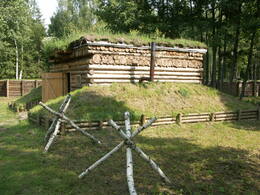
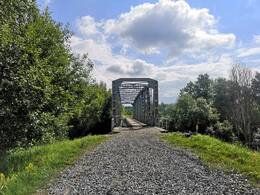

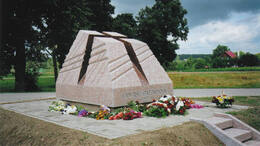
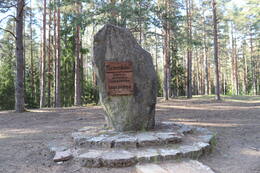
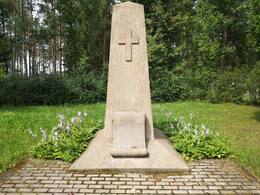
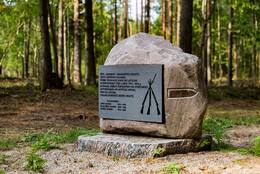
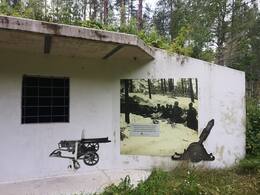
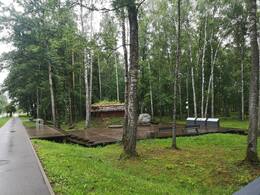
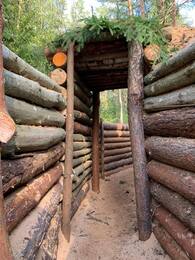
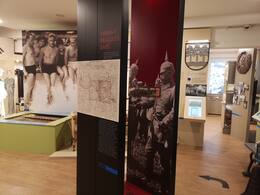
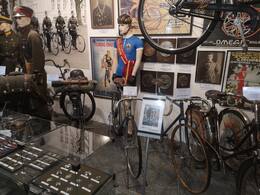
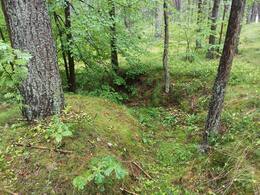
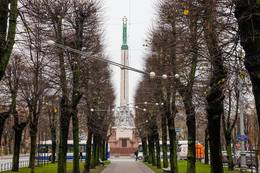
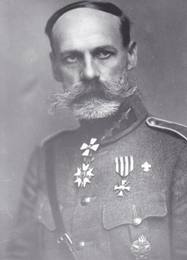
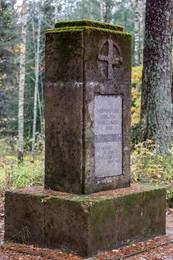
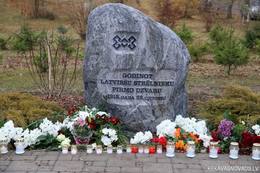
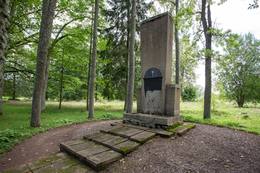
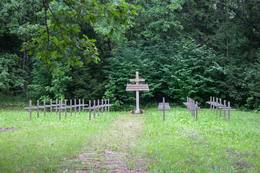
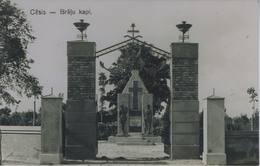
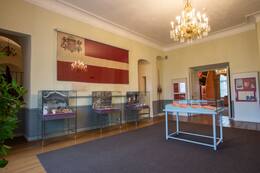
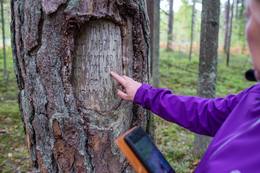
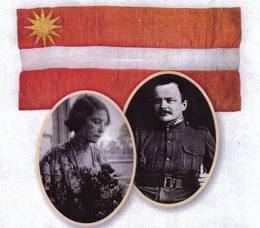
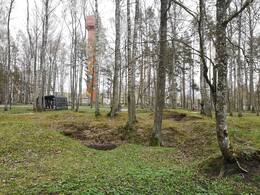
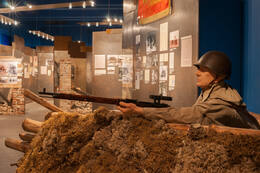
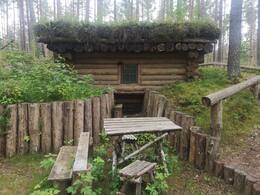
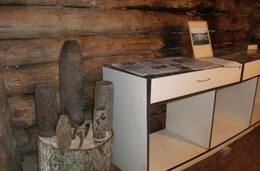
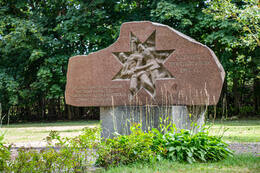
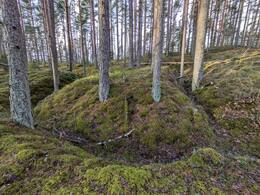
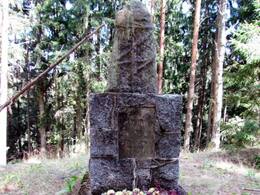
Lūdzu veikt labojumus kritušo latviešu strēlnieku sarakstā . Manas omammas brālis Indriķis Kadiķis Jēkaba dēls ,kritis 1917. gada 16. janvārī, dzimis Snēpel